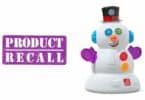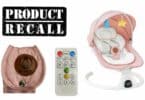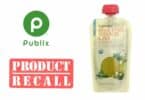Processed baby foods have been making waves recently due to increasing lead contamination concerns. The issue is especially concerning given that baby food often contains some of the highest concentrations of lead on average. This has prompted many researchers and organizations to look into baby food manufacturing and industrial processes to try and identify potential sources of lead contamination.
In an effort to ensure babies receive the optimal nutrition they need with minimal exposure, the FDA has taken major steps towards achieving its Closer to Zero initiative which was announced in 2021. They have prioritized foods frequently eaten by babies and children through a variety of initiatives that aim at reducing environmental contaminants in food sources as much as possible while still maintaining access -all in order to provide nourishment without harm.
Research and Analysis:
- developing new and improved testing methods to measure lower levels of contaminants in food;
- conducting surveys on foods commonly eaten by infants and young children to understand variability in concentrations of arsenic, lead, cadmium, and mercury in these foods;
- working with federal partners to identify strategies to reduce contaminant levels in food products;
- evaluating consumption patterns for different populations;
- measuring dietary exposures to these contaminants;
- identifying reference levels for these contaminants to determine levels of concern; and
- understanding how nutrients can help protect against the health effects associated with contaminants.
Regulation:
- establishing action levels;
- increasing targeted compliance and enforcement activities; and
- monitoring levels over time to determine potential adjustments to proposed action levels.
Consultation:
- encouraging the adoption of agricultural and processing best practices by industry to lower levels of environmental contaminants in agricultural commodities and products.
“For more than 30 years, the FDA has been working to reduce exposure to lead, and other environmental contaminants, from foods. This work has resulted in a dramatic decline in lead exposure from foods since the mid-1980s. The proposed action levels announced today, along with our continued work with our state and federal partners, and with industry and growers to identify mitigation strategies, will result in long-term, meaningful and sustainable reductions in the exposure to this contaminant from foods,” said FDA Commissioner Robert M. Califf, M.D. “For babies and young children who eat the foods covered in today’s draft guidance, the FDA estimates that these action levels could result in as much as a 24-27% reduction in exposure to lead from these foods.”
Foods covered by the draft guidance, Action Levels for Lead in Food Intended for Babies and Young Children, are those processed foods, such as food packaged in jars, pouches, tubs, and boxes and intended for babies and young children less than two years old. The draft guidance contains the following action levels:
- 10 parts per billion (ppb) for fruits, vegetables (excluding single-ingredient root vegetables), mixtures (including grain and meat-based mixtures), yogurts, custards/puddings, and single-ingredient meats.
- 20 ppb for root vegetables (single ingredient).
- 20 ppb for dry cereals.
To ensure food safety, the FDA requires certain action levels for lead in baby foods. These standards are tailored to address varying consumption habits and account for different products that may absorb higher amounts of this contaminant from the environment. By enforcing these requirements, regulators hope to minimize potential risks posed by environmental contaminants while encouraging a continual decrease in their presence across all types of foods.
The FDA considers a variety of factors when assessing potential health risks in food consumption, including the presence of lead. To ensure safe dietary exposure, they have established an Interim Reference Level to measure how much contribution lead makes to our blood levels from food sources. While it is true that fruits and vegetables can absorb contaminants like lead through their environment, this does not necessarily render these foods dangerous – rather by closely examining contaminant levels and intake rate the FDA has developed guidelines for protecting public safety while still allowing them access to nutrient-rich produce!
RELATED ARTICLES:







